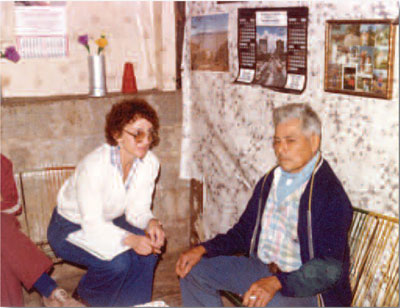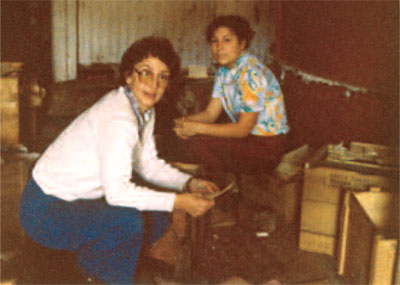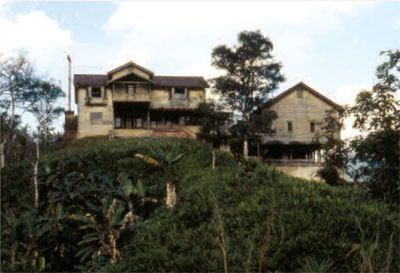
Eccentrics abound among the explorers, adventurers, and archaeologists who have contributed to Mesoamerican archaeology. One who has intrigued me for more than three decades is Robert Burkitt, whose work, more than half a century after his death, continues to contribute to our knowledge of the Maya.
I first heard of him in the late 1970s, from William R. Coe, then Curator of the American Section at the Penn Museum. Burkitt had excavated for the Museum in Guatemala from 1912 to 1937. Coe’s description of him as “the man who came to tea and stayed for thirty years” captured my interest, and I turned to our Museum Archives for more information. There I found a 1915 letter from Burkitt’s father, the Reverend T. H. Burkitt, to Museum Director George Byron Gordon (1910–1927), asking about his son’s address in Guatemala. Included in the letter was a request that the Director not tell Robert that his father had asked about him as they had not been in communication for some time. Well! This touch of family drama drove me from interest to obsession, and I determined to learn more.
That winter my husband and I headed to Guatemala for vacation and a bit of sleuthing, armed with the names of some families who might have known Burkitt. We met the children of his friends, and heard some delightful anecdotes about his strange behavior. For example, he insisted on being called “Brown,” he shaved his head, and he took sun baths at high noon—a habit the Maya thought totally insane.
At the time of his death, Burkitt had been living at Sepacuité, the plantation of his old friend Kensett Champney, and everyone with whom we spoke agreed that Burkitt had had “trunks” of notebooks there. Yet each person provided a different story about the final disposition of his papers after his death—everything from them having been taken away by a mysterious stranger to them being burned or even held for ransom by illiterate Indians. Unfortunately, it was just before we returned to Philadelphia that we were given the telephone number of Champney’s grandson.
When we came back to Guatemala the following year, 1979, I called Edgar Champney despite having been warned of his irascible nature. To my surprise the voice at the other end of the line was very cordial. Champney told me that indeed he remembered Burkitt and thought there might be some of his papers still packed away on the finca (ranch). He said he planned to go there after spending Christmas in Cobán—the provincial capital of Alta Verapaz—and would take a look. With a temerity I did not know I possessed, I asked if we might come along. He warned that the trip was not an easy one, but he did not say no.

That was how my husband and I found ourselves in Cobán on the day after Christmas, following Edgar Champney in his pickup truck to Sepacuité. His 13-year-old daughter Rebecca, who was entranced by the Burkitt story and his 30-year stay at her family’s finca, rode with us.
Just outside Cobán we turned off the paved road and onto a dirt road whose condition deteriorated with each mile, at times, nothing more than well-worn ruts. We forded at least nine shallow streams as the narrow roadway rose precipitously and snaked around the mountains. Occasionally we caught glimpses of the picturesque Polochic River as it meandered through the fertile valley far below. The trip took seven hours and we only reached the ranch after dark, forcing us to wait until the next morning to explore the storerooms.
The next day, after spending several fruitless hours search- ing in the ranch office, we went out to the stables, where more hours and more boxes yielded nothing but old farm records and moldy hay. Just as I stepped outside to breathe fresh air and shed a tear or two of frustration, Rebecca came running out to tell me that they had found two boxes with the name “Burkitt” stenciled on them.
Upon opening them we found Burkitt’s linguistic note- books from 1903 to 1917. I was ecstatic. I hugged everyone, kissed my husband, laughed, cried, and, I think, actually did a little dance. Although all his other Guatemalan papers, both earlier and later, had apparently been lost or destroyed, at least this much remained. Edgar Champney graciously allowed me to bring the notebooks back to the States.
Burkitt’s notebooks carry far more than mere word-lists for several of the Maya languages spoken in the Guatemalan highlands. Indeed, his compilation of Q’eqchi’ is perhaps the most complete and earliest description of this important language recorded in modern times. He used several informants, asked detailed questions, and included a lot of ethnographic information along with the linguistic data.

Over the years, as I researched his life, and turned to an examination of some of his archaeological work for my Ph.D. dissertation, I wondered how to publish this trove. Not being a linguist, I do not have the skill to turn Burkitt’s idiosyncratic notation into a more acceptable orthography. Yet I was determined to bring this almost-forgotten scholar’s work to light.
In the late 1990s, when John M. Weeks came to the Museum Library as Librarian, his research interests coincided with my obsession. An archaeologist with linguistic training as well as a literary scholar who delights in ferreting out old manuscripts that deserve the light of modern publication, John took on the Burkitt notebooks. He transferred their contents, with their bits and pieces of fascinating cultural data along with all the linguistic information, into computer files that could be searched, analyzed, and, we hope, published in the near future.
With this portion of Burkitt’s life’s work now on course for wider distribution, the original notebooks have earned a comfortable retirement. They have found their true home, the Museum Archives, where they rest along with all of Burkitt’s correspondence, photographs, and field notes. Their journey could have no sweeter end.
